Some users reported that even after having Outlook configured correctly, they do not receive email notifications as Desktop Alerts. So, whenever there’s a new message from someone, it is visible under ‘Inbox’ folder, but the Action Center doesn’t pop up the notification with sound. If Microsoft Outlook fails to display email notifications as Desktop Alerts, this post will help you fix the problem on Windows 11/10.
Outlook notifications not working on Windows 11/10
If Microsoft Outlook notifications are not working issue on Windows 11/10 desktop, follow these suggestions:
- Enable Outlook notification in Windows Settings
- Check Outlook notifications settings
- Check Office OCT/MSP file
- Check notifications settings in Outlook
- Turn off Battery saver
- Disable Focus assist
- Check notifications rules
To learn more about these steps, continue reading.
1] Enable Outlook notification in Windows Settings
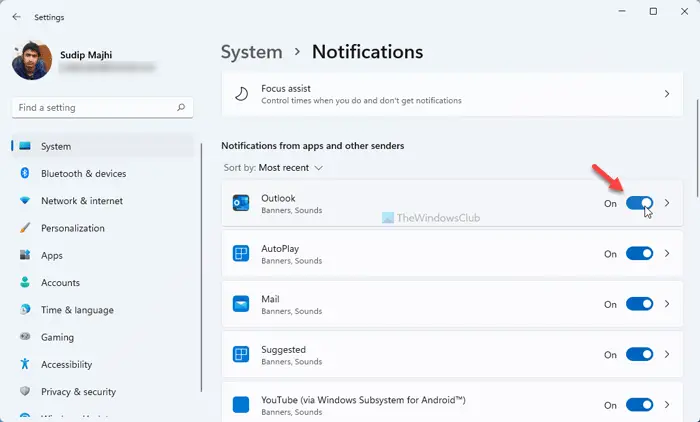
It is the first thing you need to check when Outlook shows some notifications issues on Windows 11 or Windows 10. If notifications are blocked in Windows Settings, you cannot get any mail updates.
Firstly, this issue can occur if the Outlook App wasn’t registered correctly with Windows 11/10 at the time of installation or the registry key has somehow become corrupted. As such, even if you enabled ‘Display a Desktop Alert’ in the Mail option, you do not see it.
If it gets worse, you have to check messages by updating the folder. Here’s a registry tweak that can help you get past this problem.
In a normal case, this behavior can be corrected by going to the Settings app, selecting System, and choosing Notifications & Actions.
Then, scroll down to locate the following option – Get notifications from these senders. Look for Outlook under it and slide the toggle to the ‘On’ position.
Read: Outlook Web notifications not working
2] Check Outlook notifications settings
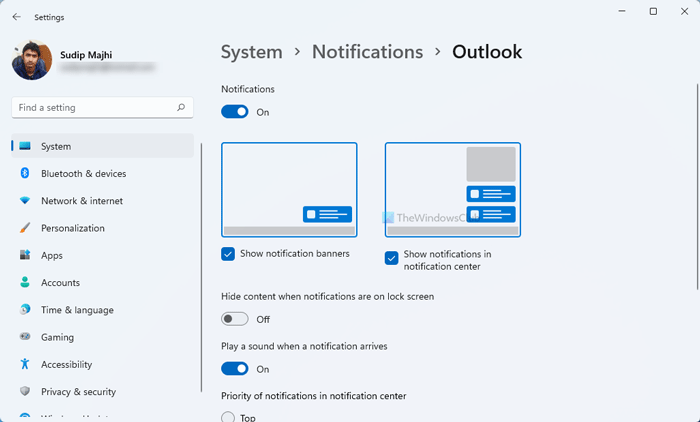
It is the second thing you need to check before heading to other solutions. Windows 11 and Windows 10 allow users to have several options to manage notifications from a particular app. To verify those settings, do the following:
- Press Win+I to open Windows Settings.
- Go to System > Notifications.
- Click on the arrow icon associated with Outlook.
- Tick the Show notifications banners and Show notifications in notification center.
- Toggle the Play a sound when a notification arrives to turn it on.
- Also, choose a priority level (Top, High, or Normal).
After that, check if these changes solve your issue or not.
Here’s how the settings look in Windows 10.
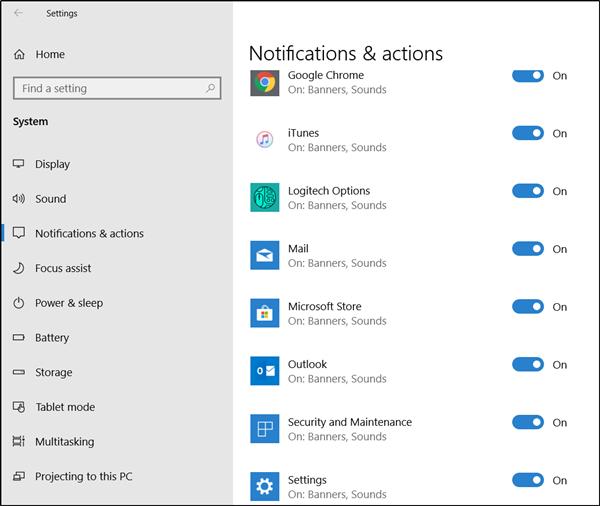
If, Outlook does not appear under ‘Get notifications from these senders’ then, try the below method.
3] Check Office OCT/MSP file
The Outlook shortcuts are generated by a customized Office installation – Office customization file (OCT/MSP file). It is this file that includes the customization of shortcuts on the Desktop and grouping into a folder within the Start menu. At times, it can run into some strange issue. When this happens, the broken icons appear in the folder:
C:\Windows\Installer\{90160000-0011-0000-0000-0000000FF1CE}
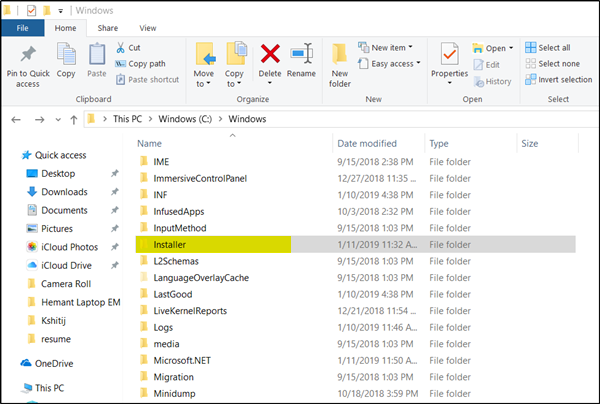
To fix this, try doing a fresh install of Office without any admin file on another Windows 10 PC.
After that, try pulling those shortcuts from a default install and copy them over the shortcuts in the Start Menu folder, which can be found under:
C:\Program Data\Microsoft\Windows\Start Menu\Programs\
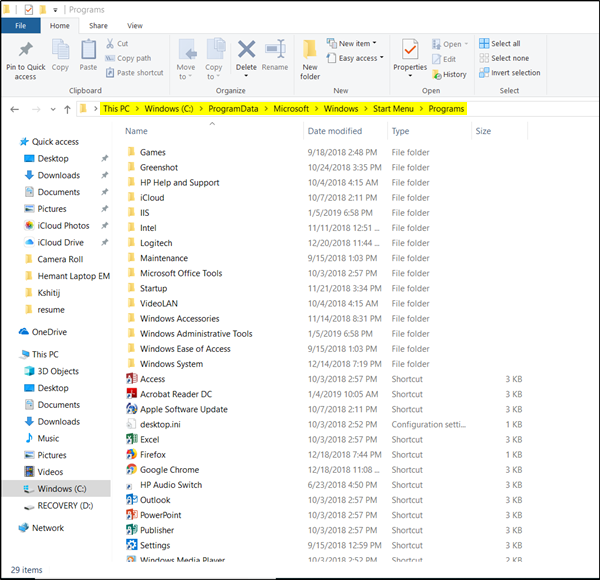
This action generates the shortcuts with a different target path than the default setup.
Now, simply perform a restart process, and the Outlook notifications should be working again.
4] Check notifications settings in Outlook
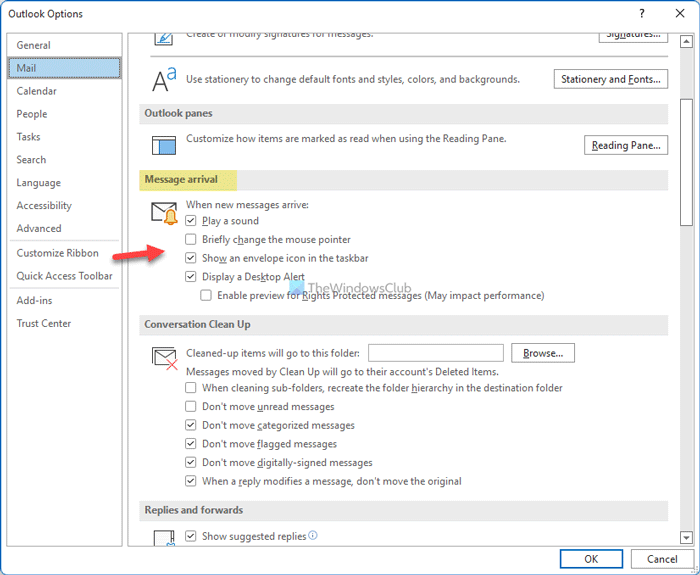
Outlook itself comes with several options to manage the notifications for new emails. You need to verify those as well. For that, follow the following steps:
- Open the Outlook app on your computer.
- Click on the File menu on the top menu bar.
- Click on the Options.
- Switch to the Mail tab from the left side.
- Head over to the Message arrival section.
- Tick all the checkboxes.
- Click the OK button.
After that, you should start receiving email notifications on your computer.
5] Turn off Battery saver
Battery saver is yet another feature that blocks all the notifications that are not set as Top priority. If you set Outlook’s notifications as a Normal priority, you might get this issue on your computer. For that, you need to check if Battery Saver is turned off or not. If yes, you need to turn it off to check if it is causing the issue or not.
6] Disable Focus assist
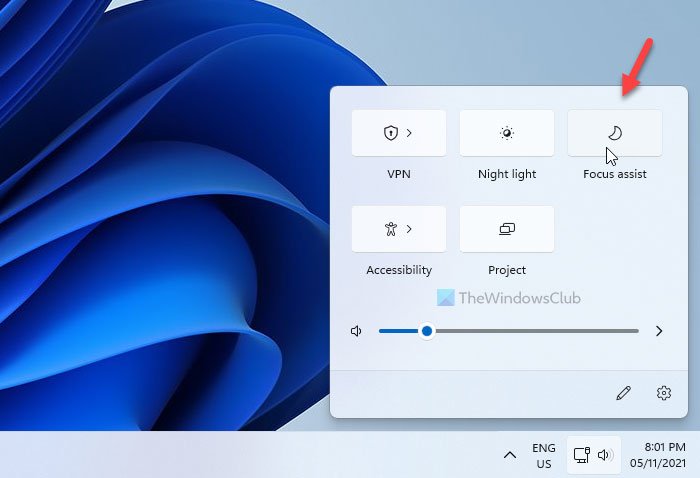
Focus assist lets you block all the notifications except it passes through the predefined filters. If Outlook doesn’t comply with the Focus assist filters, you will receive such problems while getting notifications. Therefore, you need to disable Focus assist in order to fix the issue.
7] Check notifications rules
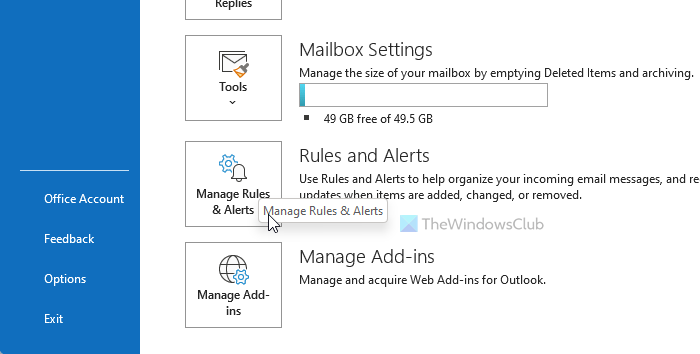
Outlook allows you set various rules that come into action at a predefined time. If you have set some rules related to notifications, you might encounter such problems on your PC. Therefore, it is better to disable all the rules at once and check if it resolves the problem or not. Then, turn on one rule at a time to find out the culprit.
Why are Outlook Notifications not working?
There could be several reasons why Outlook notifications are not working on Windows 11 or Windows 10 computers. The first thing you need to check is the Outlook notification settings in the Windows Settings panel. Then, you must head over to the Focus assist and Battery saver settings. If those are enabled, you might not get any form of notifications.
How do I get pop-up Notifications in Outlook on Windows 11/10?
To get pop-up notifications in Outlook on Windows 11/10, you need to open Windows Settings and go to System > Notifications. Then, find out Outlook and click on the arrow icon. It opens up all the notifications-related settings. You need to tick the Show notification banners checkbox.
PS: Also see Jim’s comment below.
Related read: How to stop Outlook Calendar email notifications.